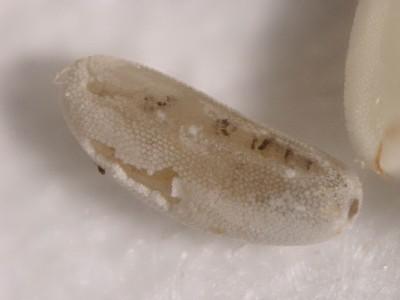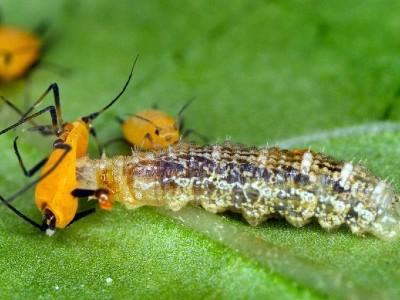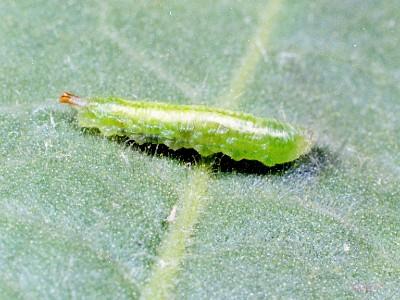About flower flies
- Flower flies (Family: Syrphidae) are beneficial predators
- Flower flies are also known as hoverflies or syrphid flies.
- They are common aphid predators in the garden and landscape.

Appearance
- The adults resemble bees, with yellow and black, or white and black striped abdomens. Often confused with sweat bees, they are stingless flies that mimic the appearance of small bees in order to avoid predators.
- They are 1/8 to 5/8 of an inch long and are often found hovering over flowers like hummingbirds feeding on nectar.
Where to find them
- Frequently found swarming around – and sometimes landing on - humans, likely attracted to moisture and salts on our skin.
- Exhibit a characteristic flight pattern they hover and can abruptly change position, earning them the nickname "hoverflies".
- Adults are mainly nonselective pollinators, feeding on nectar and pollen from a variety of plants and agriculturally important crops including strawberries, peppers, pears, and almonds.
- Generally, prefer white and yellow-colored flowers and due to their short mouthparts, most also prefer flowers with a more open shape. They allow the nectar and pollen to be more easily accessed.
- Some species appear to be less affected by land-use changes than many bee species. They are better able to use resources from highly modified habitats – including agricultural fields.
Flower fly life stages
- The larval stages of many Syrphid species are also beneficial in the landscape, preying on soft-bodied pest insects like aphids and thrips.
- The adult female fly lays eggs near aphid colonies, and may often be seen flying around aphid-infested plants.
- The eggs hatch into larvae (maggots) that may be grayish or greenish, and are somewhat translucent. These larvae consume large numbers of aphids before moving off the foliage into the soil to pupate.
- Adult flower flies must have nectar. Grow perennial and annual flowers to attract them. They are not currently available commercially.
Contributor: University of Maryland graduate student Veronica Yurchak. February 2020



